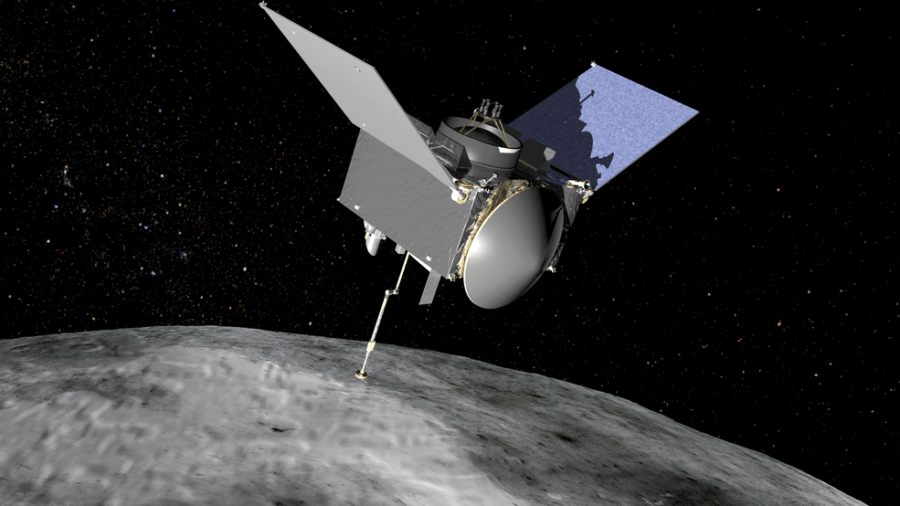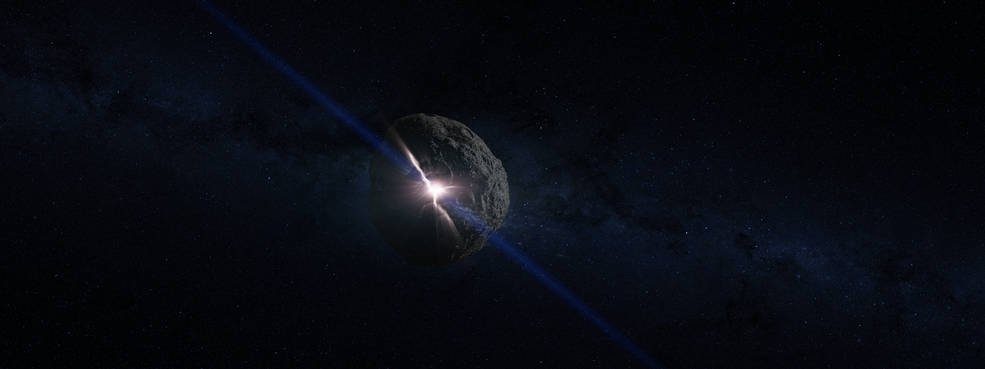NASA to sample asteroid that might one day hit Earth

NASA IS LAUNCHING a mission next month to sample a potentially hazardous asteroid that’s due to come within close range of Earth late next century.
The mission – called OSIRIS-Rex – will take about seven years, with the explorer spacecraft set to launch on 8 September this year, to reach the 492m-diameter asteroid – called Bennu – by 2018, returning with a 60g sample by 2023.
Edward Beshore, from the University of Arizona and Deputy Principal Investigator for the mission, says understanding Bennu’s experiences will provide scientists with more information about where the Solar System came from and how it evolved.
“Bennu’s Journey” is a 6 minute animation created at NASA’s Goddard Space Flight Center in Greenbelt, Maryland, to show what we known and what remains mysterious about the life of Bennu and the origin of the Solar System.
“Like the detectives in a crime show episode, we’ll examine bits of evidence from Bennu to understand more completely the story of the Solar System, which is ultimately the story of our origin,” Edward said.
With an orbit close to Earth, Bennu will pass between the Earth and the Moon in 2135, and there is a small chance – about one in 2500 – it will cause impact late next century, with this mission set to aid future research into potentially hazardous asteroids.
A time capsule
Scientists believe Bennu may have formed as a result of a collision between a planetesimal (small celestial body) and an asteroid about one billion years ago.
In the millions of years following the collision, it’s thought Bennu’s orbit gradually tightened before interaction with Saturn’s gravity thrust it into the inner solar system – where it can be studied.

An artist’s concept of the impact that created the asteroid Bennu. (Image: NASA’s Goddard Space Flight Center Conceptual Image Lab)
It is believed Bennu may consist of chondrules – small lumps of dust flash heated into droplets of molten rock during the formation of the solar system 4.5 billion years ago – which through gravity, clumped together to form planets, asteroids and other geological features.
These chondrules are essentially the building blocks of the Solar System, and Edward says the sample collected will allow researchers to study “some of the most pristine material to be found anywhere in the Solar System.”
“On planets like Earth, the original materials have been profoundly altered by geologic activity and chemical reactions with our atmosphere and water,” Edward says.
“We think Bennu may be relatively unchanged – so this asteroid is like a time capsule for us to examine.”
READ MORE:
- World’s largest asteroid impact found in Australia
- Meteorite craters in Australia
- NASA releases epic transit of Mercury video

